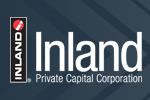Sponsored: Self-Storage Continues Trend of Strong Performance in Today’s CRE Market
Due to its favorable demand and supply fundamentals, the self-storage sector remains a recession-resilient commercial real estate asset. Self-storage is anticipated to reach a total value of $65 billion by 2026, a 5.5 percent annual growth rate since 2022.[1] In this video, Rahul Sehgal, chief investment officer and executive vice president at Inland Private Capital Corporation, speaks to the sector’s success and characteristics that continue to drive growth.
Video Transcript
Rahul Sehgal 10:15
The self-storage market has long been described as a recession resilient commercial real estate sector with the success largely anchored on a favorable supply and demand interplay that was minimally impacted by the recent COVID-19 pandemic.
The fundamentals of the sector in terms of occupancy and rent growth have dramatically improved over the past decade. In 2020 the self storage market was valued at just over 48 billion and is expected to reach nearly 65 billion by 2026. Which equates to an average compound growth rate of 5.5% from 2021 to 2026. This anticipated growth is partially correlated to the increase in demand for multifamily as well as the sector becoming more institutionalized and less fragmented.
Now many might be wondering how surging inflation and recent interest rate hikes have affected the sector given the significant demand and impact on most Americans daily lives. The answer is actually very surprising as compared to typical household costs such as rent car payments gas and even groceries monthly rent for a storage unit is relatively low. As of May of 2022 the average rent for a standard 10 by 10 storage unit was $131 a month, while a climate controlled unit of the same size was approximately $150 a month. This low cost supports the long-term rental storage units with most Americans keeping their unit for a year or longer although it typically begins as a temporary fix.
There are several key factors driving a robust demand for self-storage. Most notably the ability to convert large self storage units into smaller ones with a very low construction cost associated with that process. This gives owners and operators the opportunity to provide more units for more customers. In addition, we have the 4D’s death, divorce, dislocation, and downsizing. These life events and demographic demand drivers occur irrespective of the economic environment. Also, we have a growing transient population specifically the millennials and baby boomers which account for nearly 50% of our population. Many young millennials have adopted travel lifestyles that require storage units to house personal items as they experience life outside their hometowns also baby boomers are downsizing from large homes into smaller apartments and condos as they enjoy their retirement years.
These factors have led to higher occupancies providing owners and operators the ability to maintain pricing power and allow for continued rent increases. There are a few additional reasons for the strong performance of the self storage sector and why we believe its future is bright. First is the decline of big box retailers which have led to a recent trend of converting these abandoned locations into large self storage facilities. Most retail stores tend to be located in highly trafficked areas with great visibility and the sites are generally superior to traditional self storage locations, reporting very well for occupancy rates and rents. Second municipalities are now more likely to grant a zoning variance.
Historically there has been a reluctance toward self storage because no sales tax revenue is generated which is traditionally a significant portion of their revenue stream. But as many of these spaces have sat vacant for years local governments are now more open to other uses especially storage. And finally, we’re seeing a transition from traditional manned facilities to ones that invest in technology friendly options. More self storage facility owners are embracing technology to streamline their operations that saves both time and money and it’s self storage technology continues to advance it allows for a wider range of customer relationship management options.
So, with that the overall outlook for the self storage sector is a very strong. Research shows that self storage rent collections and occupancy rates have remained stable and even experienced exponential growth as compared to other core real estate sectors. This is certainly true within our own self storage portfolio, the average occupancy rates within our mature portfolios have increased from the mid 80% range in 2017 to almost 91% in 2022. I believe the sector has come a long way in the last decade and continues to evolve which magnifies the long term opportunity to continue to invest in the self storage sector.
For more Inland Private Capital news, please visit their directory page.

